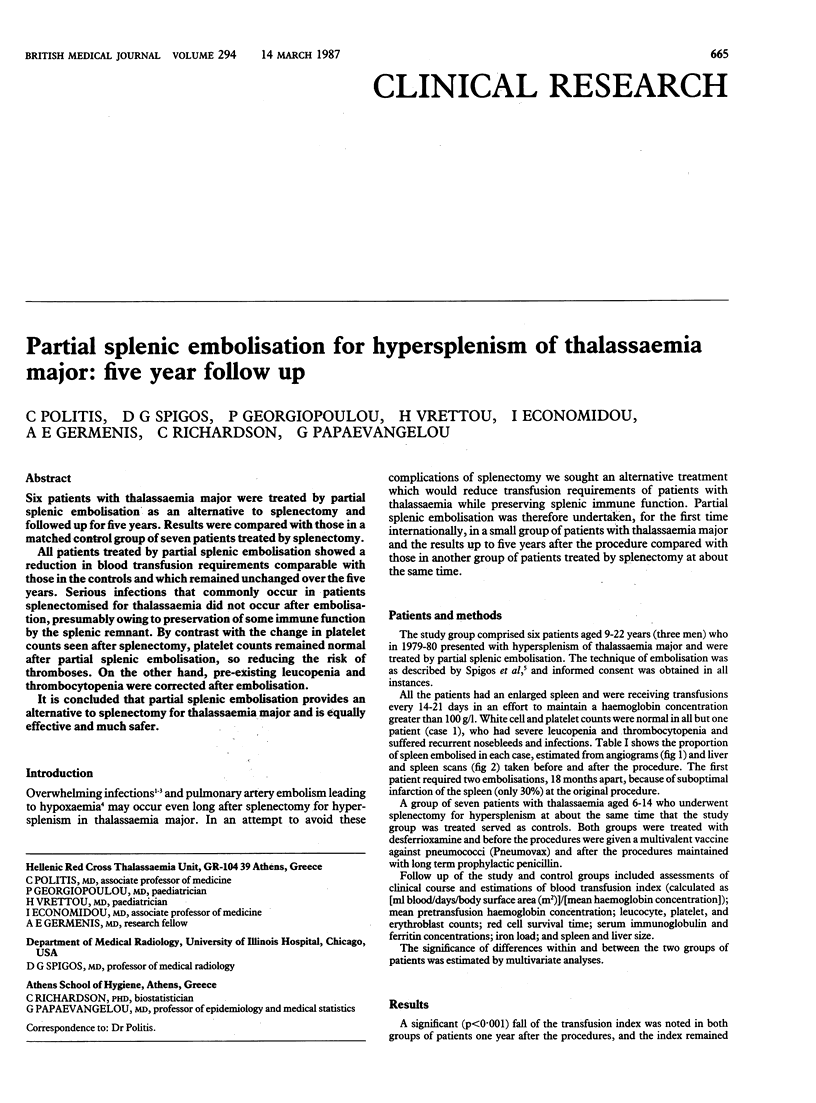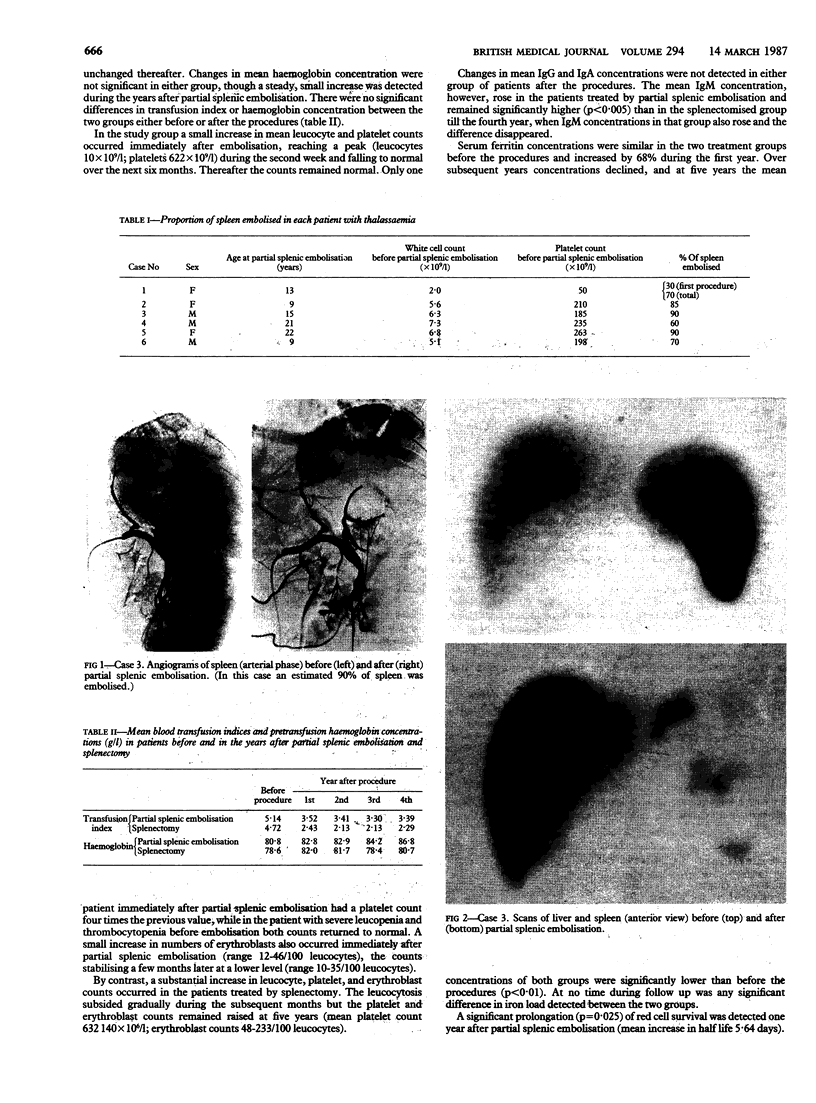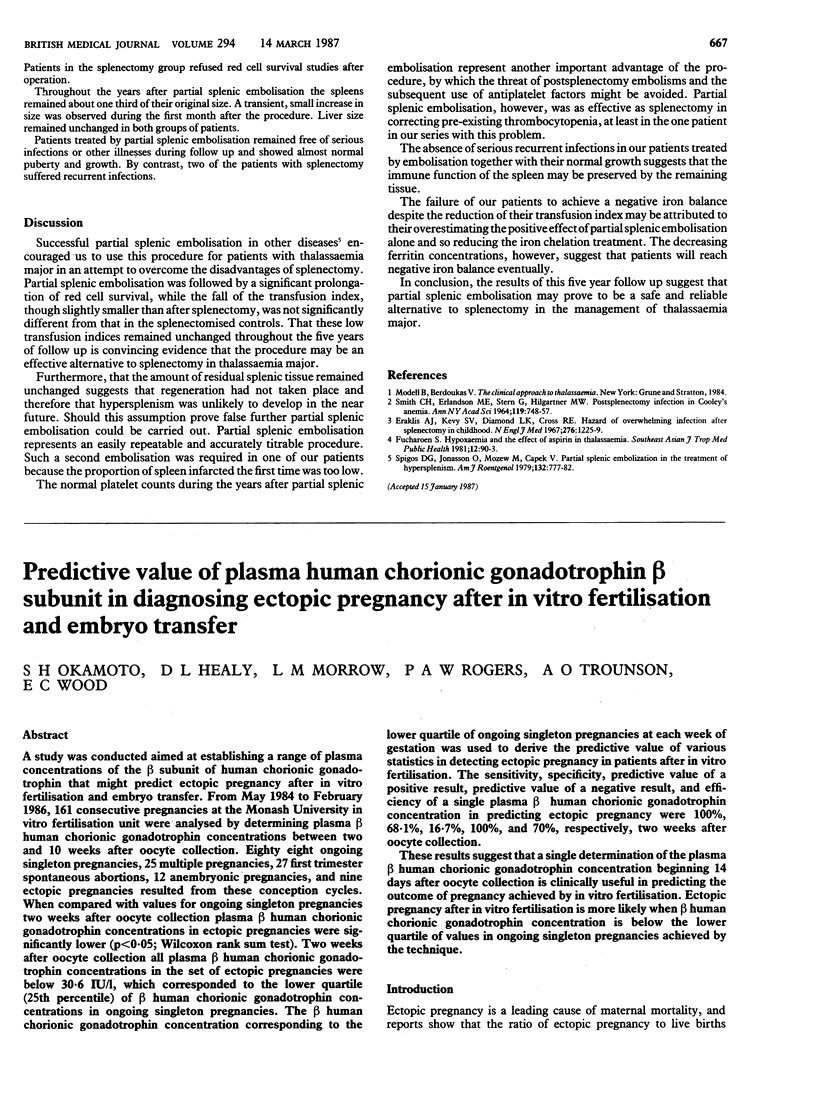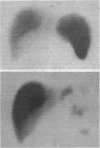Abstract
Six patients with thalassaemia major were treated by partial splenic embolisation as an alternative to splenectomy and followed up for five years. Results were compared with those in a matched control group of seven patients treated by splenectomy. All patients treated by partial splenic embolisation showed a reduction in blood transfusion requirements comparable with those in the controls and which remained unchanged over the five years. Serious infections that commonly occur in patients splenectomised for thalassaemia did not occur after embolisation, presumably owing to preservation of some immune function by the splenic remnant. By contrast with the change in platelet counts seen after splenectomy, platelet counts remained normal after partial splenic embolisation, so reducing the risk of thromboses. On the other hand, pre-existing leucopenia and thrombocytopenia were corrected after embolisation. It is concluded that partial splenic embolisation provides an alternative to splenectomy for thalassaemia major and is equally effective and much safer.
Full text
PDF


Images in this article
Selected References
These references are in PubMed. This may not be the complete list of references from this article.
- Eraklis A. J., Kevy S. V., Diamond L. K., Gross R. E. Hazard of overwhelming infection after splenectomy in childhood. N Engl J Med. 1967 Jun 1;276(22):1225–1229. doi: 10.1056/NEJM196706012762203. [DOI] [PubMed] [Google Scholar]
- SMITH C. H., ERLANDSON M. E., STERN G., HILGARTNER M. W. POSTSPLENECTOMY INFECTION IN COOLEY'S ANEMIA. Ann N Y Acad Sci. 1964 Oct 7;119:748–757. doi: 10.1111/j.1749-6632.1965.tb54076.x. [DOI] [PubMed] [Google Scholar]
- Spigos D. G., Jonasson O., Mozes M., Capek V. Partial splenic embolization in the treatment of hypersplenism. AJR Am J Roentgenol. 1979 May;132(5):777–782. doi: 10.2214/ajr.132.5.777. [DOI] [PubMed] [Google Scholar]




